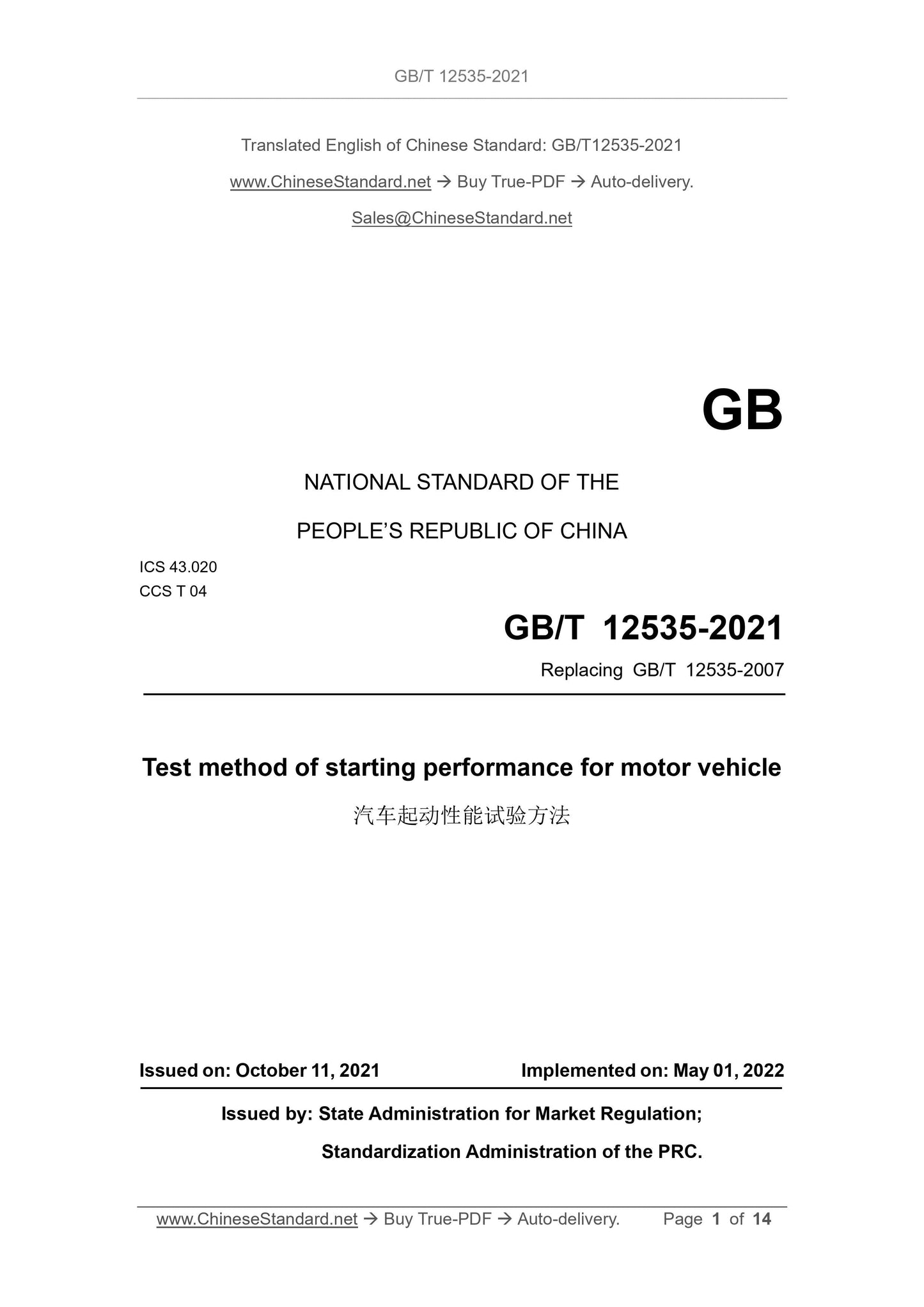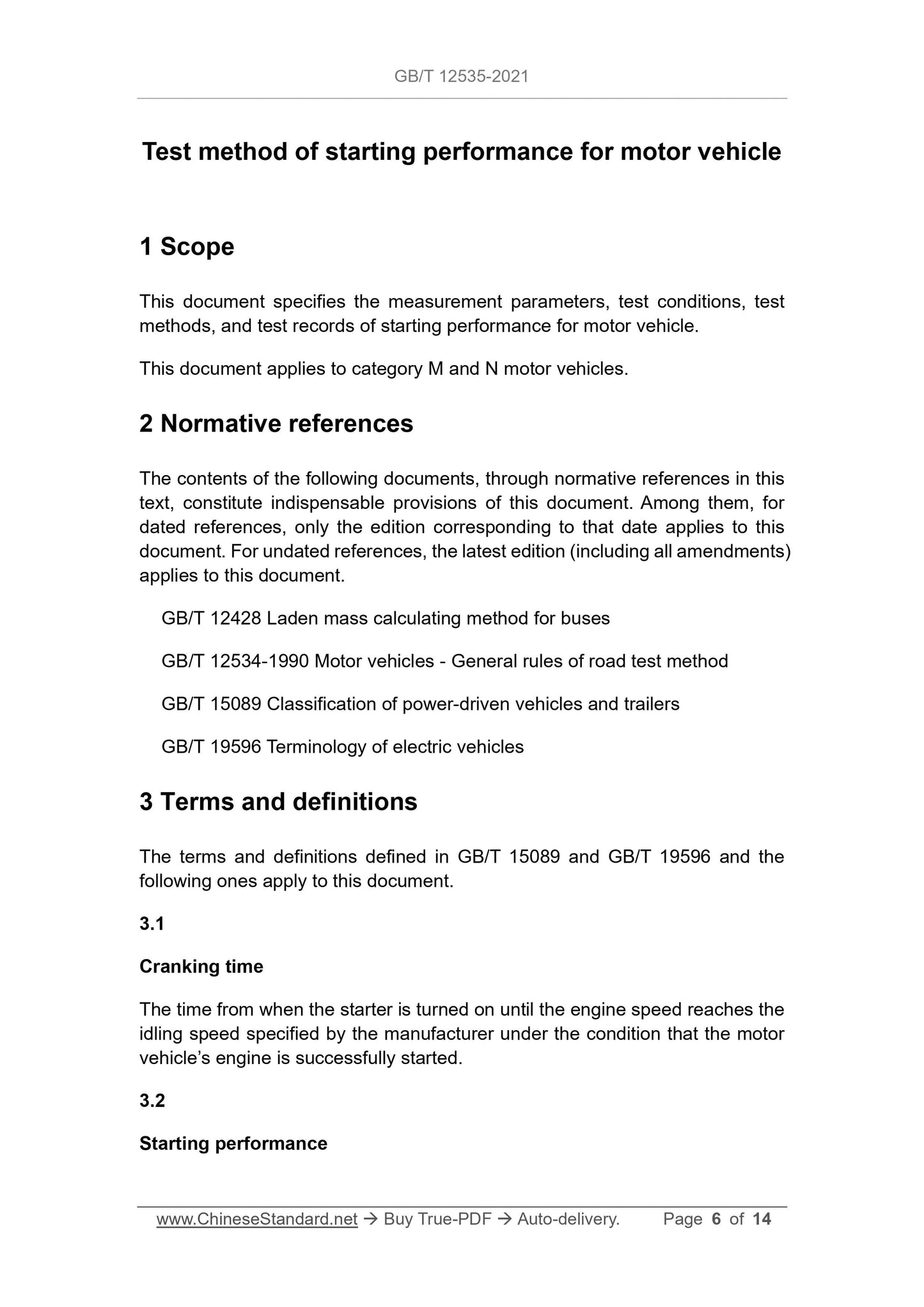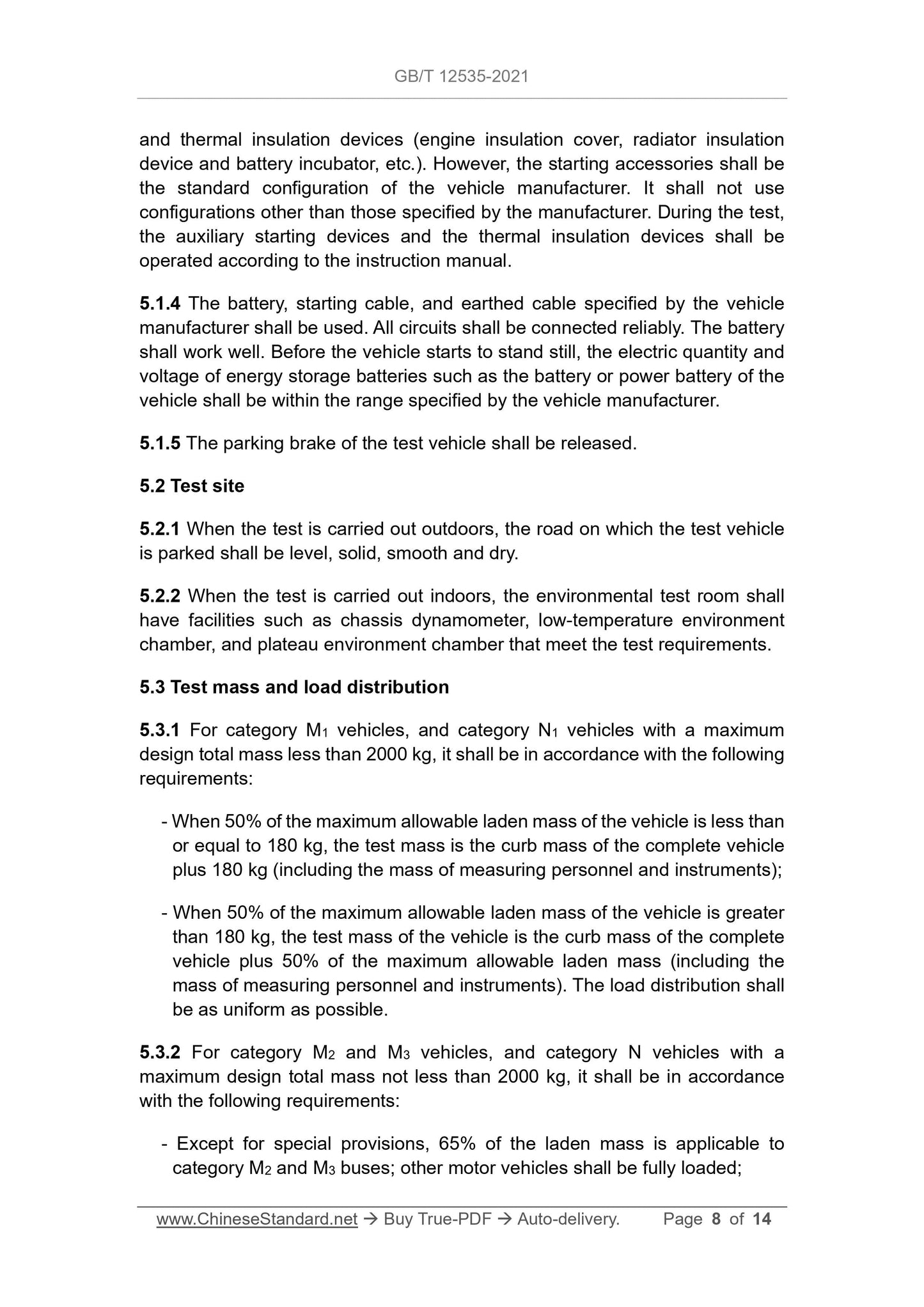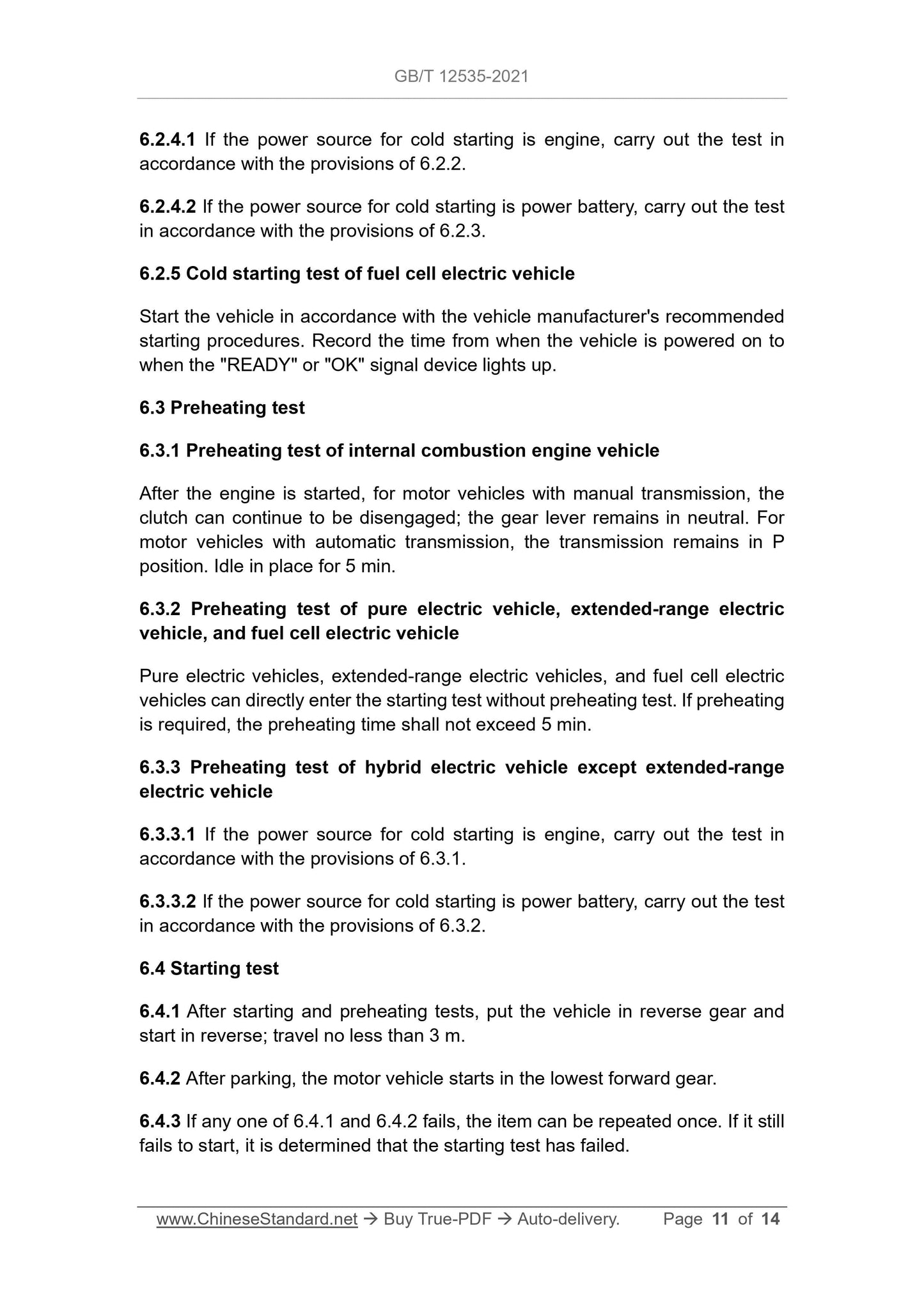1
/
of
5
www.ChineseStandard.us -- Field Test Asia Pte. Ltd.
GB/T 12535-2021 English PDF (GB/T12535-2021)
GB/T 12535-2021 English PDF (GB/T12535-2021)
Regular price
$170.00
Regular price
Sale price
$170.00
Unit price
/
per
Shipping calculated at checkout.
Couldn't load pickup availability
GB/T 12535-2021: Test method of starting performance for motor vehicle
Delivery: 9 seconds. Download (and Email) true-PDF + Invoice.Get Quotation: Click GB/T 12535-2021 (Self-service in 1-minute)
Newer / historical versions: GB/T 12535-2021
Preview True-PDF
Scope
This document specifies the measurement parameters, test conditions, testmethods, and test records of starting performance for motor vehicle.
This document applies to category M and N motor vehicles.
Basic Data
| Standard ID | GB/T 12535-2021 (GB/T12535-2021) |
| Description (Translated English) | Test method of starting performance for motor vehicle |
| Sector / Industry | National Standard (Recommended) |
| Classification of Chinese Standard | T04 |
| Word Count Estimation | 10,120 |
| Issuing agency(ies) | State Administration for Market Regulation, China National Standardization Administration |
Share









